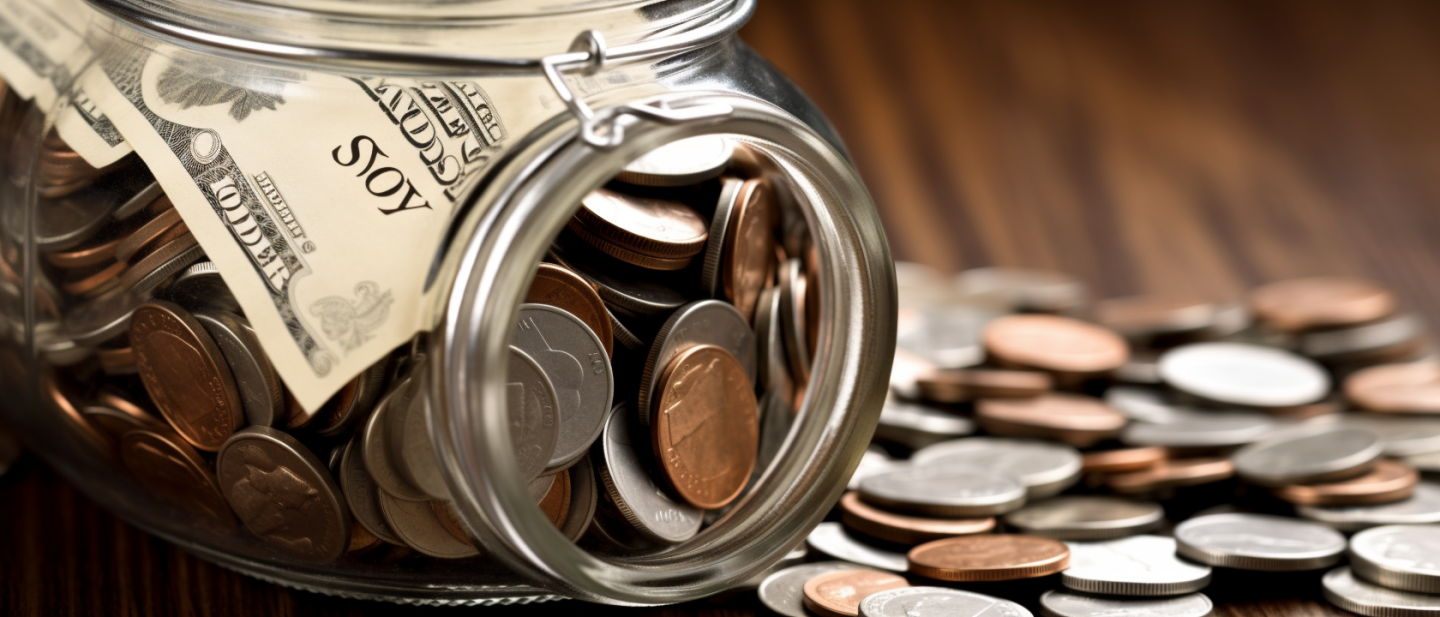
Table of Contents
- Multiple savings accounts can help you stay organized and reach your financial goals.
- Different savings accounts offer different interest rates, making it possible to maximize interest earned on savings.
- Multiple savings accounts can help you separate your savings into different “buckets” for different purposes.
- Having multiple savings accounts can also avoid penalties associated with some savings accounts.
- Setting up automatic transfers, keeping track of account balances and interest rates, and having a plan for each account are some tips to manage multiple savings accounts.
- Managing multiple savings accounts can be easy and beneficial with a bit of planning and organization.
Can I Have Multiple Savings Accounts?
Yes, you can have multiple savings accounts. In fact, having multiple savings accounts can be beneficial for managing your finances and achieving your financial goals. According to a survey conducted by Bankrate, just 44% of Americans have more than one savings account.
Is there a limit to how many can be opened? No. There is no specific limit to how many savings accounts you can have. However, it’s important to note that each bank or credit union may have its own account opening policies and requirements.
Additionally, the Federal Deposit Insurance Corporation (FDIC) only insures deposits up to $250,000 per depositor per insured bank for each account ownership category.
Also, the number of savings accounts you should have will vary depending on your individual financial situation and goals. However, many financial experts recommend having at least three savings accounts: one for emergency savings, one for short-term savings, and one for long-term savings.
For emergency savings, it is recommended to have enough money to cover at least three to six months of living expenses, according to a report by Bankrate.
Short-term savings include money saved for upcoming expenses such as a vacation or home renovation. Long-term savings could include savings for retirement or a down payment on a house.
Reasons to Have Multiple Savings Accounts
There are several reasons why having multiple savings accounts can be beneficial. Here are a few examples:
Separating short-term and long-term savings
One of the main reasons to have multiple savings accounts is to separate your short-term and long-term savings. For example, you might have one savings account for your emergency fund, which you will need to access quickly in case of an unexpected expense, and another for your retirement savings, which you will only need to access for a few years.
This way, you can ensure that your short-term savings are easily accessible while your long-term savings are protected and earning interest.
According to a survey by Bankrate, only 39% of Americans can cover a $1,000 emergency expense with savings. Having multiple savings account can also reduce the temptation to dip into your long-term savings for short-term expenses.
Taking advantage of high-yield savings accounts
Another reason to have multiple savings accounts is to take advantage of high-yield savings accounts offered by different banks and financial institutions. High-yield savings accounts typically offer a higher interest rate than traditional ones, which means your savings will grow faster.
“It’s important to watch out for potential downsides such as minimum balance requirements, fees, and withdrawal restrictions. Additionally, be wary of promotional interest rates that may drop after a certain period. Always read the fine print before opening an account.”
Creating an Emergency fund
Having multiple savings accounts can also be useful for creating an emergency fund. An emergency fund is a savings account that you can rely on in case of unexpected expenses, such as a medical emergency or job loss.
A dedicated emergency fund can help you avoid having to borrow money or dip into your long-term savings in case of an emergency.
Saving for specific goals
Finally, having multiple savings accounts can also be useful for saving for specific goals. For example, you might have one savings account for a down payment on a house, another savings account for a vacation, and another savings account for a new car.
This way, you can keep track of how much you have saved for each goal and ensure you are on track to achieve them.
Overall, having multiple savings accounts can be a smart financial strategy for separating short-term and long-term savings, taking advantage of high-yield savings accounts, creating an emergency fund and saving for specific goals. It can also help you stay organized and motivated as you achieve your financial goals.
“It may help to keep a spreadsheet or use a tracking app for all of your accounts to ensure you do not forget about them, and in the event of your passing, they could be easily found by your executor.”
Types of Saving Accounts to Consider
When it comes to saving money, a variety of options are available to you. Each type of savings account offers different benefits and drawbacks, so it’s important to understand the differences and choose the one that best fits your needs. The following are some types:
High-yield Savings Accounts
High-yield savings accounts are popular because they offer higher interest rates than traditional ones. This means your money will grow faster in a high-yield savings account, making it a great option for long-term savings goals like a down payment on a house or retirement.
One thing to remember with high-yield savings accounts is that they often require a higher minimum deposit or balance to earn a higher interest rate. Additionally, they may come with more withdrawal restrictions, so read the terms and conditions carefully before opening an account.
“There may be additional options for your longer-term savings that are more suitable than high-yield savings accounts, but that should be done with an investment professional like a financial advisor to see what type of portfolio is right for you.”
Ready to learn more? Take a look at our guide on the best high-yield savings accounts.
Certificates of Deposit
Certificates of deposit (CDs) are another popular savings option. With a CD, you deposit a certain amount of money for a fixed term, usually ranging from a few months to a few years. In return, you earn a fixed interest rate for the term of the CD.
One of the main benefits of CDs is that they offer a guaranteed return on your investment. However, they also come with some drawbacks.
For example, if you need to withdraw your money before the end of the term, you may have to pay a penalty. Additionally, CDs usually have lower interest rates than high-yield savings accounts, and may not keep up with the inflation rate, effectively locking you into a real loss rate despite the nominal gain.
Ready to learn more? Take a look at our guides on the different types of CDs accounts and the best CD rates.
Money Market Accounts
Money market accounts are similar to savings accounts but typically offer higher interest rates and more flexible withdrawal options. They are also FDIC-insured, which provides an added layer of security.
Money market accounts often have a higher minimum deposit or balance requirements than traditional savings accounts. And like high-yield savings accounts, they may come with more restrictions on withdrawals.
In conclusion, choosing the right savings account depends on your individual needs and financial goals.
High-yield savings accounts are a great option for long-term savings; certificates of deposit offer a guaranteed return on investment, and Money Market Accounts provide higher interest rates and more flexible withdrawal options.
Ready to learn more? Take a look at our guides on the best money market accounts or money market accounts vs. CDs.
How to Manage Multiple Savings Accounts
Managing multiple savings accounts can be a great way to save money, but it can also be overwhelming if you don’t stay organized.
To make the most of your savings accounts, you’ll need to set up automatic transfers, keep track of account balances and interest rates, shop around for the best deals, and read the fine print to understand the fees and terms of each account. Here’s a step-by-step guide to help you get started.
Setting up automatic transfers
The first step in managing multiple savings accounts is to set up automatic transfers.
You can set up automatic transfers from your checking account to your savings accounts on a weekly or monthly basis. You can also set up automatic transfers to multiple savings accounts, so you can save money for different goals.
Keeping track of account balances and interest rates
Once you’ve set up automatic transfers, you’ll need to keep track of your account balances and interest rates. This will help you know how much money you have saved and how much interest you’re earning.
You can keep track of your account balances and interest rates by regularly checking your account statements or using an app that links all your accounts together.
Shopping around for the best savings account deals
It’s important to shop around for the best savings account deals. Not all savings accounts are created equal, and some may offer higher interest rates or lower fees than others.
Take the time to research different savings accounts to find the one that best suits your needs.
Reading the fine print and understanding the fees and terms of each account
Finally, it’s important to read the fine print and understand the fees and terms of each account. Each savings account may have different fees and terms; you’ll need to understand these to make the most of your savings.
Pros and Cons of Multiple Savings Accounts
When it comes to saving money, having multiple savings accounts can be a great way to keep your finances organized and reach your savings goals.
However, it’s important to understand the pros and cons of having multiple savings accounts before opening several. The following are some of them:
Pros of Multiple Savings Accounts
- Organization: One of the biggest benefits of having multiple savings accounts is that it can help you keep your finances organized. For example, you can open a separate account for your savings goals, such as a vacation fund, a down payment on a house, and an emergency fund. This makes it easy to track your progress and see exactly how much you need to save for each goal.
- Better Interest Rates: Another benefit of having multiple savings accounts is that you can shop around for the best interest rates. By opening accounts at different banks or credit unions, you can find the highest interest rates for your savings goals.
- Easy Access to Funds: Having multiple savings accounts also gives you easy access to funds for different purposes. For example, you can have an account for short-term savings such as an emergency fund and one for long-term savings such as retirement.
Cons of Multiple Savings Accounts
- Fees: One of the biggest drawbacks of having multiple savings accounts is that each account may have its own fees. For example, some banks charge monthly maintenance fees, while others may charge fees for transactions or withdrawals. This can add up quickly if you have multiple accounts.
- Difficulty in Tracking: Another drawback of having multiple savings accounts is that keeping track of your finances can be more difficult. You’ll need to log in to multiple accounts to see your balance and interest earned, which can be time-consuming and confusing.
- Minimum Balance Requirement: Some savings accounts may have a minimum balance requirement, if you cannot maintain the minimum balance, the account may be closed, or additional charges may be applied.
“It might be worth speaking to a financial representative to ensure you are making the right decision in regards to your longer-term financial goals, as there may be more suitable investments, like stocks and bonds, that would better suit your investment objectives and goals.”










